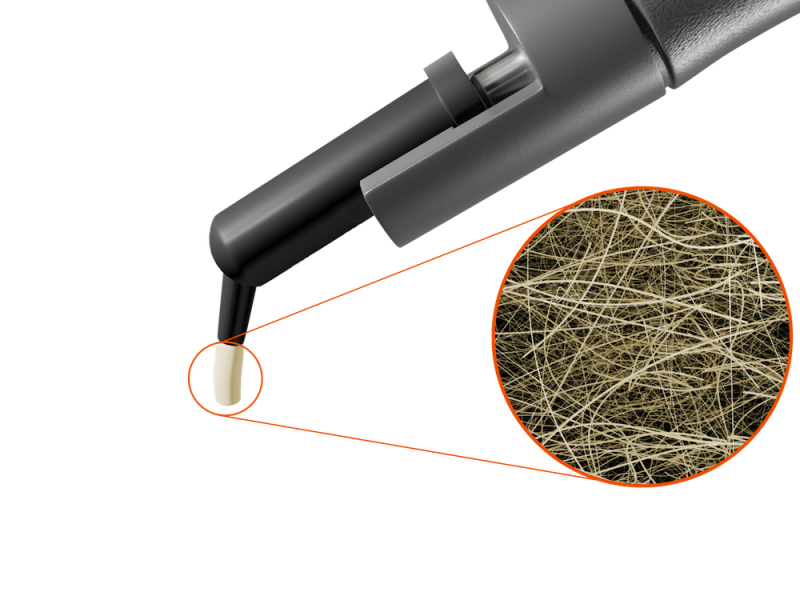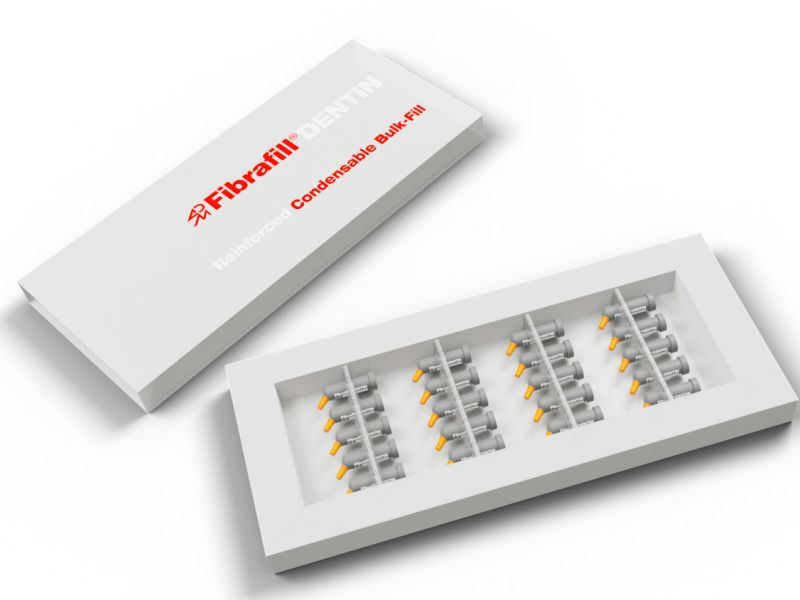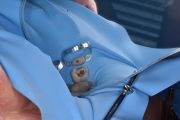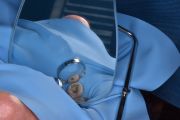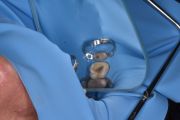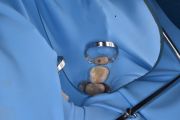Fibrafill Dentin
Short fiber Bulk Fill
$89.00
Indication Range:
- Composite fillings of class I, II and V, deep cavities in endodontically treated teeth, pre-endodontic andpost-endodontic restorations, core restorations
Benefits for Your Dental Practice:
- Time savings in large restoration fabricationeasy application of the materials
- Easy application of the materials
- Reduced risk of failure
- Widening the possibilities of conservative methods of hard tissue restoration
Packaging:
- Contains 20 unitip compules of 0.13 ml (0.25 g) each
-
Product details
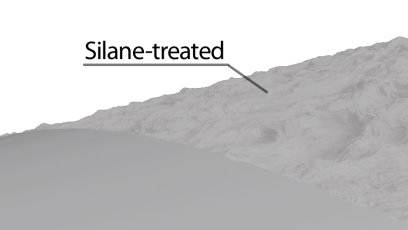 Fibrafill® DENTIN is tailored for dental professionals seeking to replicate the natural dentin layer with advanced composite materials.
Fibrafill® DENTIN is tailored for dental professionals seeking to replicate the natural dentin layer with advanced composite materials.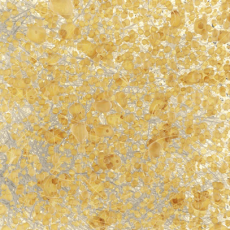 Its formulation, enhanced with sub-micron inorganic fibers, offers a unique combination of toughness and adaptability for a wide range of restorative needs.
Its formulation, enhanced with sub-micron inorganic fibers, offers a unique combination of toughness and adaptability for a wide range of restorative needs.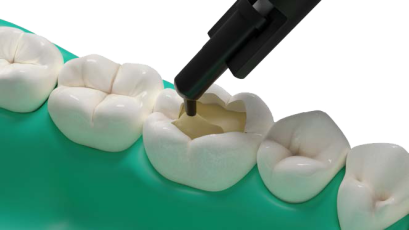 With Fibrafill® DENTIN, practitioners can deliver restorations that are not just durable but also optimized for stress distribution and minimization of potential fractures, embodying the latest in conservative dental restoration techniques.
With Fibrafill® DENTIN, practitioners can deliver restorations that are not just durable but also optimized for stress distribution and minimization of potential fractures, embodying the latest in conservative dental restoration techniques.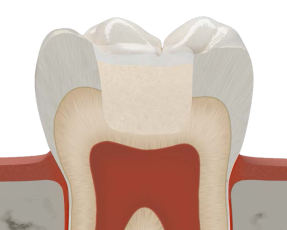 Choose Fibrafill® DENTIN and experience the harmony of cutting-edge science and artistry in your dental practice.
Choose Fibrafill® DENTIN and experience the harmony of cutting-edge science and artistry in your dental practice.Why Do Restorations Fail?
Given the fact that the fracture is the most common reason for failure, understanding and following the biomechanical principles of restoring teeth is an essential approach to reduce the risk of failure and increase the clinical efficacy of composite restorations. Thanks to the unique structural features, using Fibrafill® products helps to follow these principles to reach biomimetic resilient restorations.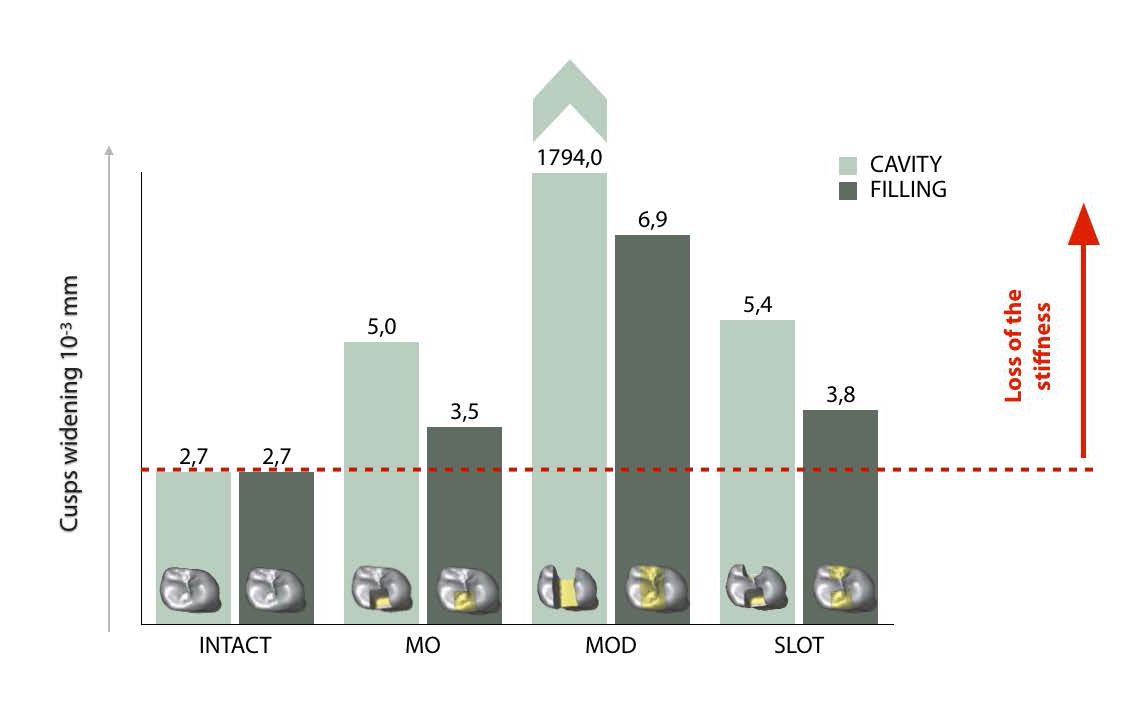 Figure 1: Cuspal widening as an indicator of loss of stiffness.Manifestation of fracture is related to uneven distribution of stresses and stress concentration. If the load exceeds the load-bearing capacity, the fracture originates in the stress concentration areas and propagates until causing a functional failure of the restoration. Cuspal deflection is a good indicator of loss of the original biomechanics of hard dental tissues. Based on the study of Magne7,8, the deflection under static load is increasing along with the scale of restoration (from MO/OD to MOD). It has been shown that the filling does not restore the original biomechanics due to the loss of the original structural integrity (Fig. 1).
Figure 1: Cuspal widening as an indicator of loss of stiffness.Manifestation of fracture is related to uneven distribution of stresses and stress concentration. If the load exceeds the load-bearing capacity, the fracture originates in the stress concentration areas and propagates until causing a functional failure of the restoration. Cuspal deflection is a good indicator of loss of the original biomechanics of hard dental tissues. Based on the study of Magne7,8, the deflection under static load is increasing along with the scale of restoration (from MO/OD to MOD). It has been shown that the filling does not restore the original biomechanics due to the loss of the original structural integrity (Fig. 1).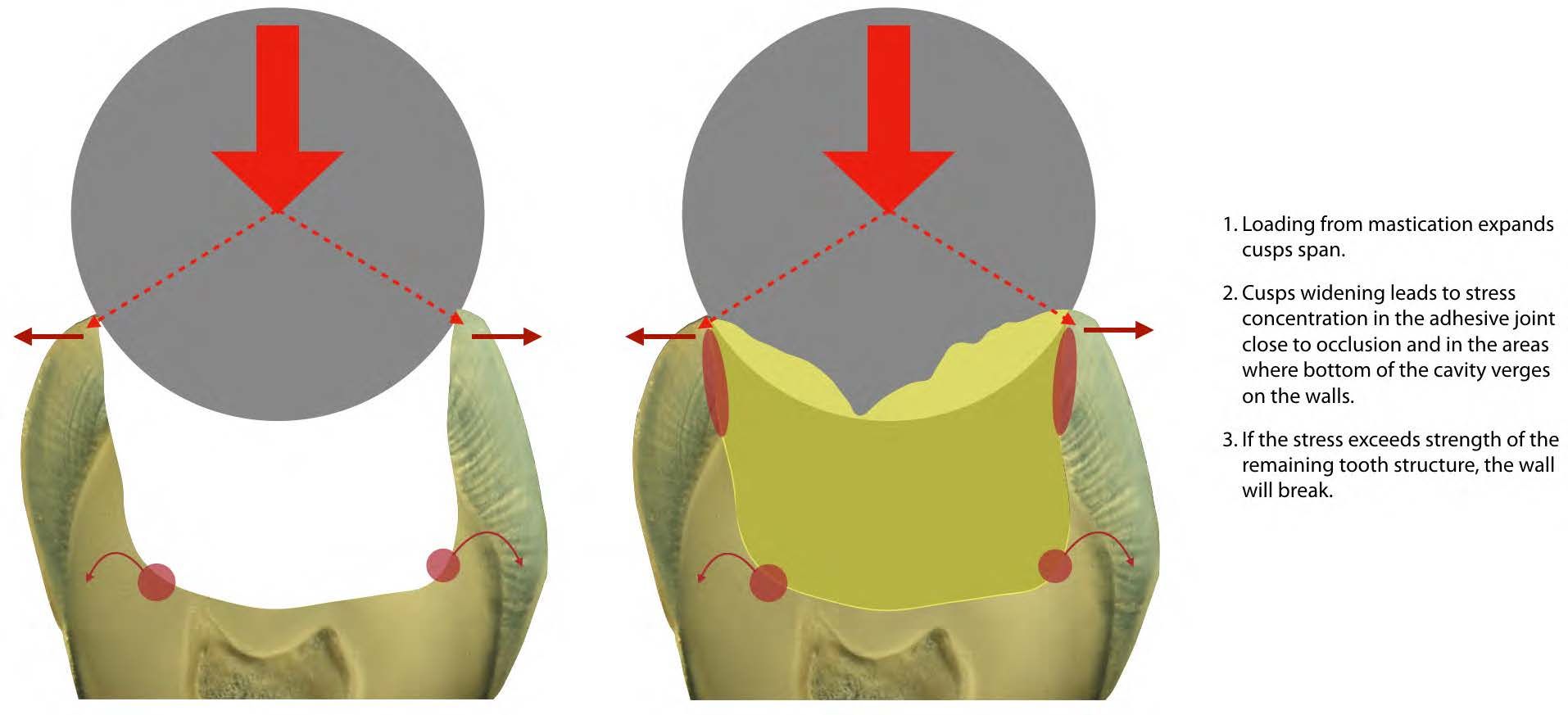 Figure 2: Schematic representation of stress concentration derived from mathematical models.
Figure 2: Schematic representation of stress concentration derived from mathematical models.Stress-Concentrators Are to Blame!
Compromised tooth structure is prone to fracture due to stress concentration, manifested especially in the areas with a sudden change in geometry, i.e. where the bottom of the cavity verges on the cavity walls (Fig. 2). The phenomenon of stress concentration effect is proved in many studies describing stress distribution for enamel, dentin and composite restoration due to masticatory load and polymerization shrinkage.Why Fibrafill and How Does It Work?
Considering large-scale restorations, the original biomechanics of the tooth cannot be functionally restored to their full extent. However, the choice of materials that includes consideration of durability and function can play an important role in terms of long-term clinical efficacy of the restorations. The design of Fibrafill® products was inspired by the aforementioned structural characteristics of an intact tooth. Figure 4: Schematic representation of the mechanism of preventing stress concentration. Tension in the reinforcing membrane relieves vertical stress in the bottom layer.
Figure 4: Schematic representation of the mechanism of preventing stress concentration. Tension in the reinforcing membrane relieves vertical stress in the bottom layer.1. Continuos Membrane
Reinforcing glass fiber membrane integrated into the discrete dose of bulk-fill composite Fibrafill® CUBE. Vertical load generates tension in the membrane which relieves vertical stress in the bottom layer (Fig. 4). The membrane prevents the effect of stress concentration, propagation or cracs in the restoration and secures marginal integrity of restoration by reducing the shear stress transferred to the adhesive joint. This includes the following material features: Figure 5: Schematic representation of crack propagation in the brittle homogeneous material and material reinforced with randomly oriented fibers.
Figure 5: Schematic representation of crack propagation in the brittle homogeneous material and material reinforced with randomly oriented fibers.2. Short-Fiber Reinforcement
Two types of short randomly oriented sub-micron fibers in Fibrafill® FLOW and Fibrafill® DENTIN composites create structural barriers against crack propagation (i.e. icreased fracture toughness). Cracks propagate very fast in the brittle materials that absorb relatively little energy prior to the fracture. As a result of fiber incorporation, propagation of cracks consumes much more energy and the material is able to resist continuous mastication forces and prevent fractures of the restoration and remaining hard dental tissues (Fig. 5).Biomimetics Is The Way
Fibrafill® system provides unique solution inspired by nature as well as modern technologies. The technology is based on the reinforcing effect of both continual and dispersed fibers. Similarly to collagen protein strands that reinforce the structure of bones or steel skeleton that reinforces concrete constructions, specially treated inorganic fibers provide the required resistance to omposite based restorations. Figure 6: Schematic representation of utilization of Fibrafill® system in the case of large Class II restoration.Biomimetic restoration based on Fibrafill® system is represented by the large Class II restoration (Fig. 6). Fibrafill® FLOW is employed as a flowable liner to improve the marginal integrity of the restoration. Fibrafill® CUBE with continuous membrane is used to prevent stress concentration and support weakened tooth walls. Fibrafill® DENTIN is used to fill the remaining volume of the cavity under the occlusion layer. For a cuspal build-up and restoration of occlusal surface it is possible to use any conventional esthetic composite. Fibrafill® products are fully compatible with any dimethacrylate-based adhesive systems and resin composites. The products can be used individually in accordance with the intended purpose of use based on the particular clinical situation and preferences of a particular dentist.
Figure 6: Schematic representation of utilization of Fibrafill® system in the case of large Class II restoration.Biomimetic restoration based on Fibrafill® system is represented by the large Class II restoration (Fig. 6). Fibrafill® FLOW is employed as a flowable liner to improve the marginal integrity of the restoration. Fibrafill® CUBE with continuous membrane is used to prevent stress concentration and support weakened tooth walls. Fibrafill® DENTIN is used to fill the remaining volume of the cavity under the occlusion layer. For a cuspal build-up and restoration of occlusal surface it is possible to use any conventional esthetic composite. Fibrafill® products are fully compatible with any dimethacrylate-based adhesive systems and resin composites. The products can be used individually in accordance with the intended purpose of use based on the particular clinical situation and preferences of a particular dentist. -
Q&A
FIBRAFILL Q&A IN PREPARATION
Our FAQ for Fibrafill is currently in preparation. In the meantime, if you have any questions, please use the form to reach out to us. Thank you for your patience!
-
Cases
Follow the courses on the MIDOLAD portal
We have prepared detailed tutorials on our Dentapreg and Fibrafill product lines, covering, among other things, information on Fibrafill Dentin.
-
Docs
Get Started with Fibrafill
Fibrafill is a microhybrid, radiopaque, light-curing composite material designed for the replacement of dentin layer in large fillings and restorations.
Testimonials
-

Dr. Jeffrey Hoos
Chief Dentist in Connecticut, USA, affiliated with leading dental and facial esthetics academies.“The success in a private practice is assured when you find materials and methods that give you beautiful, predictable clinical results that can be done in a reproducible and timely manner. I call it BALANCING: Art, Science & Business of Dentistry. Fibrafill® CUBE is a great addition in my clinical practice to help me achieve that BALANCING.”
-

Dr. Tomáš Slavíček
Masaryk University, Faculty od Medicine, Private Practitioner, Brno, Czech Republic“Fibrafill® system includes high-tech materials that are very easy to handle and have a great potential for restoring functionality of severely damaged teeth and protection of remaining hard dental tissues.”
-

Dr. Hana Hubálková
Associate Professor at Charles University, Prague, leading in prosthodontics and member of European associations.“Fibrafill® CUBE is a filling materil reinforced with continuous glass fiber membrane. The material has universal use to improve mechanical resistance of direct and indirect resto- rations of decayed teeth, post-endodontic restorations of clinical crowns in posterior area and composite onlays and overlays.”
-

Dr. Eric van Zytveld
University of Colorado, School of Dentistry, Private Practitioner, Denver, Colorado, USA"Fibrafill® CUBE strengthens teeth in a conservative manner. The cubes are very useful for restoring wide composite restorations which are under high occlusal stress and for sta- bilization of cracked teeth that do not need crowns."
-

Dr. Nikhil Bahuguna
Director and Chief Dentist at Demystifying Smiles, Noida, India, with international dental qualifications and leadership roles.“Fibrafill® CUBE has added a new dimensions to the cause of saving teeth. The enhanced support it provides to the previously weakened tooth structure gives the dentist the ability to save and strengthen the structural integrity of the tooth for a better and a more stable stomatognathic system. Being an avid user of Dentapreg® UFM mesh, Fibrafill® CUBE has made it even easier to practice stress-free dentistry adding longevity and balance to the restorations.”
-

Dr. Marc Gottlieb
Associate Clinical Professor, University Hospital at Stony Brook, Chief Dentist at Anxiety Free Dental Care, New York, USA"Fibrafill® CUBE with its imbedded fibers easy adapts to the preparation providing a mo- re durable and conservative restoration."
-

Dr. Marian Fanica
Carol Davila University of Medicine and Pharmacy, Private Practicioner, Bucharest, Romania"A time-saving product with low shrinkage and no compromise on resistance."
-

Dr. Krishna Vyas
Indian Board of Endodontics, Department of Conservtive Dentistry & Endodontics, Ayush Health University, Chairman of the Board of Directors of Raipur Multispeciality Dental Hospital, Raipur, India"My trust in glass fiber mesh concept has gone up multiple folds after witnessing many years of follow-ups of my cases wherein Dentapreg® UFM was used to reconstruct crowns and large restorations. The new product, Fibrafill® CUBE, along with the same good old properties also has an added advantage of much more convenient placement, thus making the restoration procedure much simpler."



